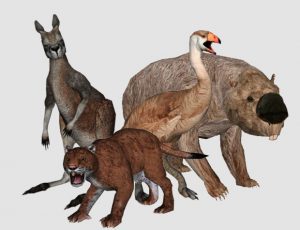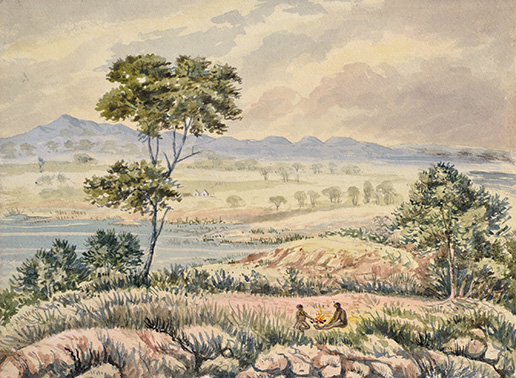Early History of the Land
The history of Aerolite started around three million years ago when a weakness in the earth's crust in the area now known as southern Victoria passed over a upwelling of hot magna. Like with many other areas of Victoria lava flowed over the country burying the whole land in hundreds of feet of basalt. However in a few places the original granite rock contained water and as this lava seeped up it changed the water to steam, very hot and very highly pressure steam that caused the lava to both exploded out of the ground sending up huge scoria cones.

As this hot lava flew through the air it cooled rapidly forming a glass like structure that later would give the rock it formed great chemical stability. The exploding steam also aerated the material giving it other unique properties of low density and a very high surface area. As the hot spot moved on things settled down and the high fertility of the surface of the ash cone promoted rapid growth of grass followed by trees. The weather at this time was much hotter and wetter than now so in as little as a few hundred years all evidence of the catastrophic energies that formed three little scoria cones has vanished. It is a little chilling to think that at this stage mega fauna including giant marsupials such as Diprotodon, huge flightless birds such as Genyornis and giant reptiles such as Varanus ‘Megalania’ wandered over these little hills for the next few million years.
At some stage some 30 or 40 thousand years ago humans came from the north and first saw the three little hills. These hills which would have not been too welcoming as by this stage the climate had changed and there was little rain, no permanent water, rough, rock covered country with scrubby trees and open grass lands which supported little game and had no good camping areas. Unfortunately, the coming of these humans also coincided with the collapse of the megafauna that had occupied the land for millions of years previously, leaving the land to be dominated by the small marsupials we see today.
Sea levels were 130 meters below current levels as the world moved into another of many ice ages so there was no Port Phillips Bay or sea close by to moderate the climate. It would have been a cold, wind swept area with little to attract people. Not much happened on the three small hills for the next few tens of thousands of years as there is physical no evidence of human use of the land. Obviously people would have walked the land but these small hills would have been no different to any other small hills in the area and humans being smart, they much preferred to camp along the banks of the local rivers where water and food were plentiful. The climate changed through a number of heating and cooling cycles until in the last few thousand years the ice melted and sea levels rose to bring the sea within slight of the three small hills and Port Phillip and Corio bays slowly filled with the sea.
The big changed came with the arrival of Europeans. The first known visit to Port Phillip and Coria bay occurred in 1802, the most famous visitor of the time was Matthew Flinders who climbed what we know now as the You Yangs and so was probably the first european to be able to properly see the three little hills as he looked west to the land forms he called the Brisbane Ranges.
The first successful settlement occurred at Portland in 1834, Melbourne was settled a year later. By the end of 1835 the area around Werribee within slite of the three small hills was being settled. Unfortunately not all were happy with what was happening. To quote Wikipedia "Early in 1835, Mr Franks, one of the first immigrants, and his shepherd were killed by some of the Goulburn tribe of aborigines. His station was near Cotterill's Mount, called the Sugarloaf, near the river Exe, now Werribee. They were both killed at one moment by the aborigines, who while pretending friendship, murdered them by driving their tomahawks into the backs of their heads. A party was soon sent out after them, led by tour of the Melbourne tribe, who recovered part of the property stolen, and took vengeance on the murderers"

